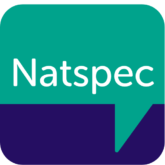You can find out how to access TOMS here.
Overview
Originally created in the 1990s by Pamela Enderby and Alexandra John, TOMs is a simple cross-disciplinary and cross-client group method to gather information on a wide range of issues associated with therapy and rehabilitation.
Following a systematic evaluation of available measures, TOMS has been identified by the Royal College of Speech and Language Therapists as the ‘best fit’ tool for measuring the outcomes of SLT.
Purpose of tool
TOMs can be used to monitor changes over time in the following four broad areas based on the international classification of functioning, disability and health (WHO, 2007):
- impairment (the underlying condition)
- activity (ability to complete daily activities
- participation (social participation)
- wellbeing (emotional health).
It can be used in treatment planning, clinical management, audit and research. It allows for the aggregation of data so that comparisons can be made for the purposes of internal and external benchmarking.
It helps clinical managers to demonstrate that they are delivering effective services by recording where a client starts and then ends their journey, after accessing the service.
Who the tool is for?
Although originally developed for speech and language therapists, TOMs can be used across a wide range of clients and by a multidisciplinary team including allied health professionals, nurses, other health, education and social care professionals.
Notes for use
- For learners making small steps of progress, TOMS is best used to monitor progress over an entire course, from starting point to the end of the course, rather than over shorter periods of time. This is because the points within each scale are broad. This is especially true of the ASD domain.
- TOMs may be useful in providing evidence of the need for specialist intervention, a place at a specialist provision or in producing a rationale for a specific piece of equipment such as an AAC device.
- The tool is also able to track emotional wellbeing and capture student voice.
- TOMS is simple to use, making it possible for therapy assistants and technical instructors to use it independently but it is helpful to have TOMS ‘experts’ on your team whom colleagues can approach with queries or concerns.
Training
There is a cost for the resources needed to administer TOMs. Training is available and highly recommended though not mandatory.
Resources
Enderby, P. and John, A. (2015) Therapy outcome measures for rehabilitation professionals, Third Edition, Guildford: J&R Press Ltd
Enderby, P. and John, A. (2019) Therapy Outcome Measure User Guide. Croydon: J& R Press Ltd
